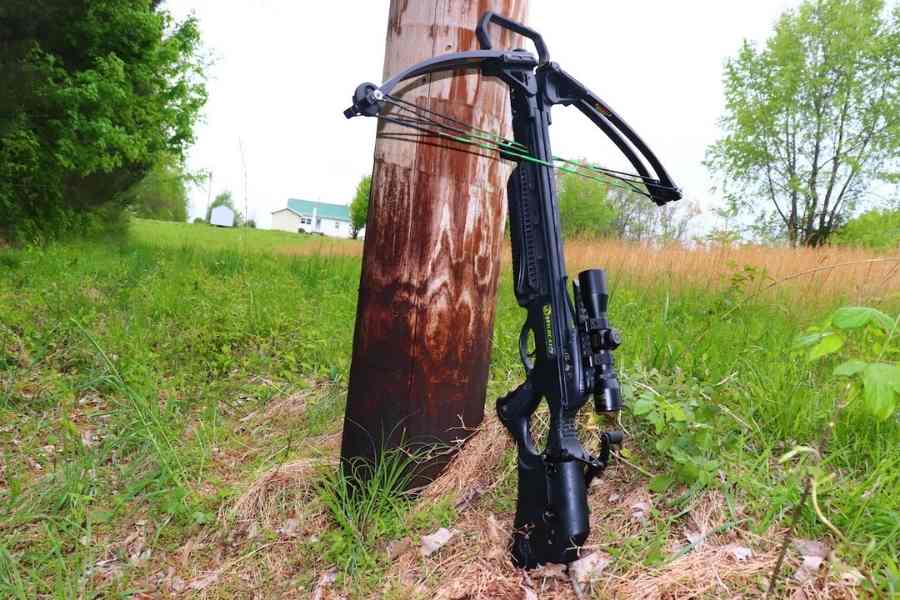Today, the sport of archery has become rather diverse. Though the use of both traditional and compound bows remains extremely popular, crossbows have gained significant notoriety over the past decade.
Though the concept of crossbow archery is nothing new, bows of this design have gained significant traction among hunters and target archers.
Crossbows are now widely used for the purpose of hunting, with a host of states now allowing their use during general archery season. Meanwhile, a number of other states offer crossbow-specific seasons, which afford hunters additional opportunities to fill their tags.
Contents (Jump to Topic)
ToggleThis rising popularity has spawned a wealth of questions among archers contemplating using such equipment.
One of the most common of these questions relates to the general differences between the “arrows” fired by a crossbow and those utilized by conventional vertical bows.
Arrow Vs. Crossbow Bolt
When discussing the arrows used by either of these two pieces of equipment, it is helpful to first understand the differences in terminology utilized to describe each projectile.
While those projectiles fired by vertical bows are arrows, those used in conjunction with a crossbow are often regarded as “bolts.”
Understanding this principle can be helpful when shopping for bolts or when discussing such arrow-like projectiles with fellow archers. Additionally, one can prevent misunderstandings that might otherwise arise when speaking on such matters.
The following are several of the most significant differences between crossbow bolts and standard arrows fired from a vertical bow.
The Consideration of Length
Generally speaking, crossbow bolts are a fair bit shorter than the conventional arrow fired by a vertical bow.
Crossbow bolts tend to measure somewhere in the range of 16″-23″, while conventional arrows measure closer to 26″-32″.
In simple terms, crossbow bolts tend to be shorter than conventional arrows, due to the additional speed and force applied by a crossbow as it fires.
Sorter bolts provide enhanced stability under such circumstances, much of which would be unattainable through the use of conventional arrows.
A Matter of Weight

While crossbow bolts are typically shorter in length than conventional arrows, they tend to weigh more than their counterparts.
Crossbow bolts usually weigh somewhere in the range of 350-460 grains, while completely finished arrows (including knock, fletchings, and insert) often weigh out to a total of 400 grains or less.
This discrepancy exists due to a need for crossbows (read.. how much draw weight do you need with your crossbow to hunt deer?) to achieve peak kinetic energy, out of each archer´s respective setup.
These heavier bolts deliver more kinetic energy downrange, which in turn, makes optimal penetration possible.
Knock Variances
The knocks used in conjunction with crossbow bolts, and those utilized by conventional arrows are not one and the same.
While both types of knocks anchor an arrow or bolt to a bowstring, they each accomplish this task in a slightly different manner.
These differences arise out of necessity, due to a number of differences between the mechanics of a crossbow and a vertical bow.
Standard crossbow bolts typically utilize a moon or half-moon knock, which features an indention, in which the bowstring rides. On the contrary, arrows generally feature a capture knock, which clasps onto a bow´s string, allowing the arrow itself to remain firmly anchored until a shot is fired.
Alternatively, some crossbow bolts now feature hybrid moon knocks, which allow a bolt´s vanes to be offset as needed when knocked.
Is there Such a Thing as Crossbow Arrows?
Over the past decade, many crossbow archers have begun referring to their projectiles as crossbow arrows. This is because the latest generation of crossbow bolts now mirrors many of the characteristics of standard arrows fired from a vertical bow.
This applies in both a mechanical and cosmetic sense.
As of late, crossbow bolts have grown in length, now measuring much closer to their standard counterparts.
Many crossbow bolts are now much lighter in weight than earlier versions of such projectiles. By definition, modern crossbow projectiles of this type could be just as easily classified as arrows as they could bolts.
Additionally, the vast majority of modern crossbow bolts now feature fletchings, not unlike those found on standard arrows.
This is in contrast to earlier iterations of the bolt, which were often fired in absence of fletching of any kind. The use of these fletchings complements the longer, lightweight design of the late crossbow “arrow.”
In fact, there has been a concerted effort as of late within the archery industry to classify virtually all crossbow bolts as arrows, especially those intended for use afield.
With time and future technical advances, one will likely find little discernible difference between crossbow bolts and arrows at some point during the next several decades.






